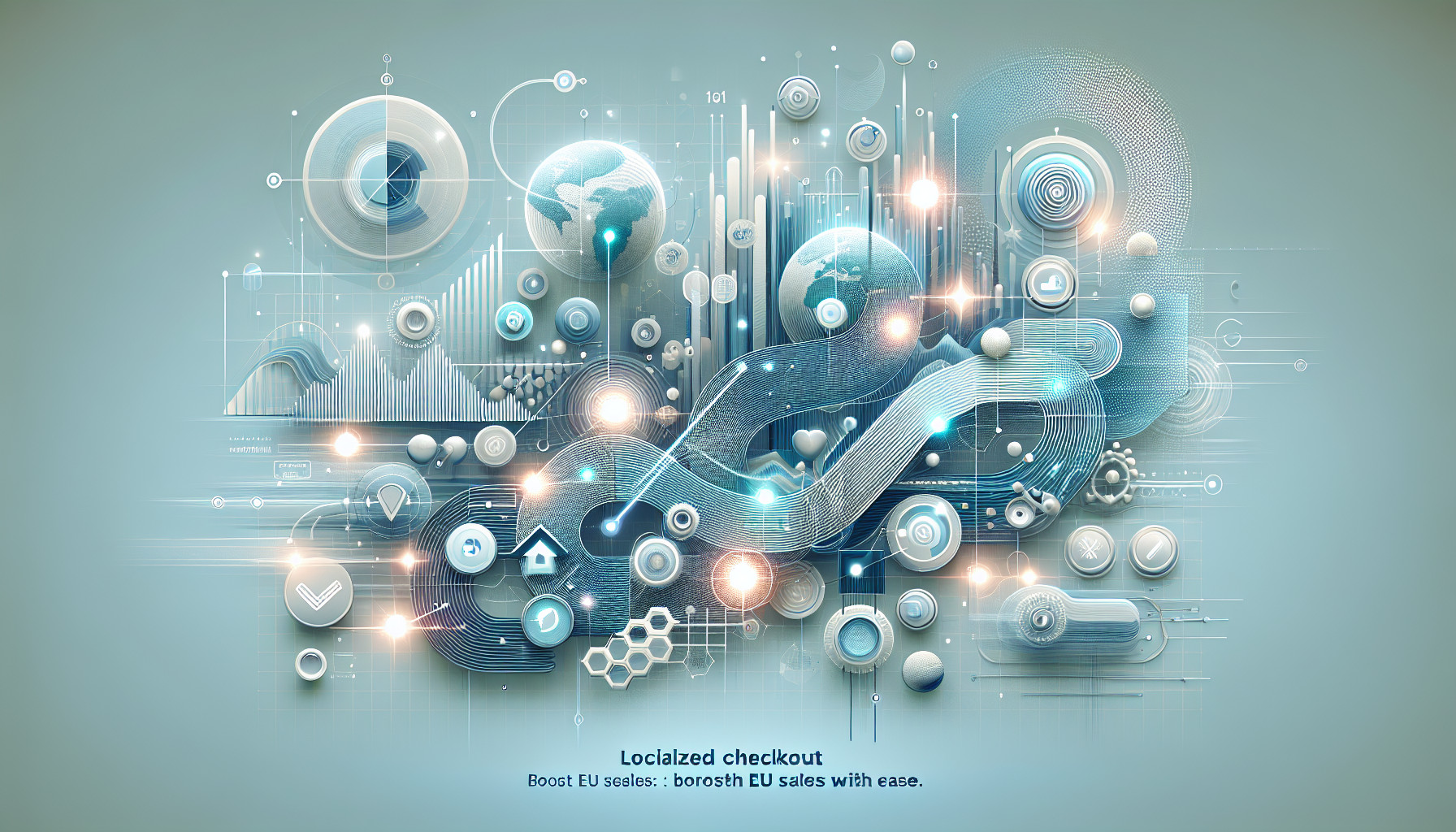About eldris
Clone.Eldris.ai empowers brands to instantly replicate and translate their websites for seamless global expansion. Our automated system delivers SEO-friendly, multilingual clones that launch in days, not months.
In This Article
- Localized checkouts increase conversion by reducing friction and boosting customer comfort
- Multilingual product pages improve trust and engagement with diverse EU audiences
- Proper formatting of currencies, addresses, and dates is essential for delivering clarity and authenticity
- Automation tools simplify scaling localisation without restricting quality
- Testing by region reveals valuable insights for continuous improvement
Why Localized Checkout Matters in the EU
Friction vs Conversion
The concept of a localized checkout is more than a digital convenience—it’s a cornerstone of converting modern European shoppers. With consumers across the EU increasingly savvy and impatient, even minor friction points in the checkout process can result in abandoned carts. From an online retailer’s perspective, failing to deliver an intuitive, localised checkout could cost you valuable transactions. Consider this: a one-size-fits-all approach ignores key differences in language, payment preferences, currencies, tax requirements, and even address formatting. All of which play a direct role in the final decision to complete a purchase.

Successful ecommerce operations understand that checkout is not just a final step—it’s a defining moment in the customer journey. By localising the experience, brands remove uncertainty, increase transparency, and significantly reduce hesitation. Moreover, trust is immediately signalled through familiarity: when a French shopper sees prices in Euros and date formats in DD/MM/YYYY, it confirms that your business respects and understands local norms. That comfort breeds confidence. And confidence fuels conversions.
Common Checkout Frustrations Across Europe
Examples of Lost Opportunities
Despite Europe being a lucrative ecommerce market, it’s also fragmented by language, culture, and regulation. Many online businesses miss the mark by offering a uniform checkout across all EU countries. For instance, imagine a German shopper encountering an English-only interface, unfamiliar VAT policies, and no access to SEPA direct debit at checkout. These subtle yet impactful missteps lead to significantly higher bounce and dropout rates. In Spain, customers might expect split name fields (Nombre and Apellido), while in the Netherlands, iDEAL is a top payment method that often goes unoffered by international merchants.
Another typical example includes not displaying localised shipping estimates or prices inclusive of local taxes. If a shopper in Italy sees a generic message like “Taxes may apply at checkout”, without precise numbers or clarity, trust erodes. Checkout localisation, therefore, is no longer a luxury; it’s a competitive necessity. Addressing these friction points directly and proactively through localized checkout design eliminates ambiguity and makes people more likely to complete their purchases—on the first visit.
The Role of Multilingual Product Pages
Language Preference & Regional Influence
First impressions start long before the payment page. Multilingual product pages set the tone for a fluid, regionally-appropriate ecommerce experience. Across the EU, where over 24 official languages coexist, consumers expect to shop in their native tongue. Even bilingual users show a strong preference for information presented in their preferred language—especially when evaluating product specifications, warranties, and return policies.
Research reveals that nearly 76% of online shoppers are more likely to complete a purchase when product details are available in their language. But linguistic translation alone isn’t enough. Regional expressions, units of measurement (e.g., centimetres in Italy vs inches in the UK), and even colour names can vary. High-quality localisation takes these subtleties into account. And most importantly, a seamless transition from a localised product page to a localized checkout maintains user trust and reduces any jarring UX shift.
Formatting Local Preferences at Checkout
Date, Address, Currency Options
After multilingual consistency comes formatting accuracy. Different EU countries display dates, addresses, and currencies in highly distinctive ways. In France, the date format is DD/MM/YYYY, while in the US-exposed segments of Europe, you might encounter MM/DD/YYYY. If a British customer sees a product labelled as shipping on “06/07/2024”, they could easily misinterpret the delivery timeline.
Addresses are another flashpoint. In the UK, postcodes precede town names; in Germany, it’s the opposite. Ensuring that your checkout form reflects the regional structure not only looks more authentic—it also reduces logistic errors. Currency localisation holds equal weight. Customers expect to view and pay in their local currency: Euros, Pounds, Kroner, or Zloty. When prices appear in USD or another unfamiliar currency, shoppers often abandon transactions fearing foreign exchange fees or hidden charges. Proper localised checkout ensures that consumers feel in control and well-informed throughout the process.
Mobile Optimization for International Shoppers
UX Tips for Smaller Screens
Over 60% of ecommerce interactions across Europe happen on mobile devices. As mobile shopping accelerates, optimising for smaller screens becomes vital. A successful localised checkout must accommodate this shift without sacrificing quality or clarity. Designing for thumb-friendly input, collapsible forms, autofill compatibility, and localised keyboard layouts (for example, German umlauts or French accents) dramatically enhance the user experience.
Moreover, loading times need to be regionally optimised. Mobile shoppers in rural Spain or parts of Eastern Europe may face slower connections. A bloated, unoptimised checkout undermines the benefits of localisation. Use lazy loading, compress images, and strip out any unnecessary scripts to keep things swift and reliable. Clear, regionally-aligned error messaging in the local language also prevents confusion and drop-offs. All of this reinforces one fact: delivering a seamless localized checkout experience on mobile isn’t optional—it’s expected.
SEO Advantages of Fully Localized Pages
Boost Visibility in Local Search Engines
Beyond user experience, there are strong SEO incentives for implementing fully localised pages. Search engine algorithms favour content relevant to the user’s geographic and language preferences. When your product pages and checkout flows are localised, they perform better in country-specific search results. For example, a French-language page with a Paris-based hosting environment will rank significantly higher for ecommerce shoppers in France than its English equivalent.
Localised URLs (e.g., yoursite.fr/product instead of yoursite.com/fr/product), hreflang annotations, and schema markup further enhance discoverability. These elements together indicate to search engines that your site has regionally relevant offerings. Localised checkout content—even if it’s hidden within the conversion funnel—also plays a role in SEO as engines begin crawling deeper and rewarding UX consistency. A well-strategised localisation approach supports both human users and search algorithms equally.
Case Studies & Industry Data
Real Results from EU Brands
Numerous European brands and international retailers have realised substantial benefits from adopting a localized checkout strategy. Zalando, the German fashion retailer, attributes over 7% annual growth in conversion rates directly to refining their checkout localisation. Their approach includes accepting local payment methods like Klarna, displaying returns policies in local languages, and pricing everything inclusively with VAT per market.
Similarly, British cosmetics brand Cult Beauty witnessed a 3x increase in Italian mobile conversions after launching a fully localised checkout in collaboration with a localisation specialist. The brand fine-tuned its interface for language, currency, address entry patterns, and device-specific UX design. These case studies prove that investment in localised checkout is not just a UX upgrade—it’s a revenue driver. Learn more about Website Localization & Multilingual Ecommerce
Automation and Scaling Localization
Tools to Save Time Without Sacrificing Quality
Manual localisation can be costly, slow, and complex. But today’s ecommerce tools help you automate much of the process without compromising on quality. Platforms like Shopify, BigCommerce, and WooCommerce offer built-in localisation features or apps that facilitate translation management, currency switching, and geolocation targeting. Services such as Weglot, Transcy, and Langify allow you to integrate dynamic language toggles and automate aspects of the checkout localisation script.
More advanced solutions use AI-driven content localisation combined with human review to maintain tone and accuracy. Businesses at scale can implement API-based localisation systems that output localised content for checkout logic across various regions. It’s vital, however, to retain some editorial control to ensure quality and cultural sensitivity. Automation is the vehicle; strategy drives the destination. Read a related article
Testing and Measuring Checkout Improvements
Key Metrics for Success
Any ecommerce optimisation effort must involve rigorous measurement. When implementing a localized checkout, key performance indicators should include bounce rate reduction, checkout completion rate, cart abandonment rate, and average order value. Segment your metrics by region to assess where your localisation efforts are yielding the best results. Use A/B testing to test variations in language, payment options, and tax displays.
Heat maps and session recordings can also help reveal usability pain points. Are users abandoning the cart after encountering unexpected fees? Is the payment field too complex or untranslated? These qualitative insights complement quantitative data and guide your next localisation upgrades. Remember: measurement without execution is wasted effort. Establish quarterly reviews to fold findings back into your ongoing strategy. Explore the Cold Start Problem and growth insights
Localization Best Practices for Shopify & Other Platforms
Easy Wins to Get Started
Shopify, Magento, BigCommerce, and other ecommerce platforms offer robust features to support localized experiences. Start simple by enabling language switching and region-based pricing. Ensure that tax-included pricing complies with EU requirements, especially in France and Sweden, where transparency laws are strict. Capitalise on built-in geolocation tools to detect a user’s region and auto-adjust checkout fields accordingly.
Other quick wins include configuring automatic VAT calculations, populating country-specific shipping options, and customising email confirmations in the local language. Then graduate to more advanced updates like showing delivery estimates in native formats or offering region-preferred customer support channels. Document everything in your localisation playbook—having consistent implementation standards improves coherence across your entire store network.
Implementing a Localization Strategy Today
Checklist You Can Use
Here’s a practical checklist to begin optimising with a localized checkout:
- Translate full product pages, including specs, sizing guides, and shipping info
- Use local date formats, currencies, and address structures
- Offer native payment options per country (e.g., Klarna in SE, iDEAL in NL)
- Enable local VAT pricing inclusive of your listed price
- Implement mobile-specific UX changes based on screen behaviour
- Design confirmation and follow-up emails in the shopper’s language
- Regularly A/B test your checkout process by market demographics
- Track KPIs like conversion rate lift, cart abandonment trends, and cross-border traffic
Every incremental improvement enhances user trust—and that converts directly to revenue. Prioritise localisation as an ongoing strategy, not a one-time project.
“We saw our Polish checkout completion rate jump by 23% in two months after implementing a native checkout with zloty, local delivery options, and translated messaging—localisation works.” – Ecommerce Director, EU Fashion Brand
Conclusion: Build Trust to Boost Conversions
A localized checkout serves both the user and your business goals. While it initially requires thoughtful planning and careful implementation, the uplift in trust, conversion rates, and customer loyalty more than covers the investment. As shoppers across Europe increasingly expect tailored digital experiences, localisation moves from a competitive advantage to an operational necessity. Aligning your ecommerce strategy with local expectations isn’t just smart—it’s the key to sustainable growth across EU markets.
Great guide on boost-eu-checkout-rates-with-localized-product-pages – Community Feedback










